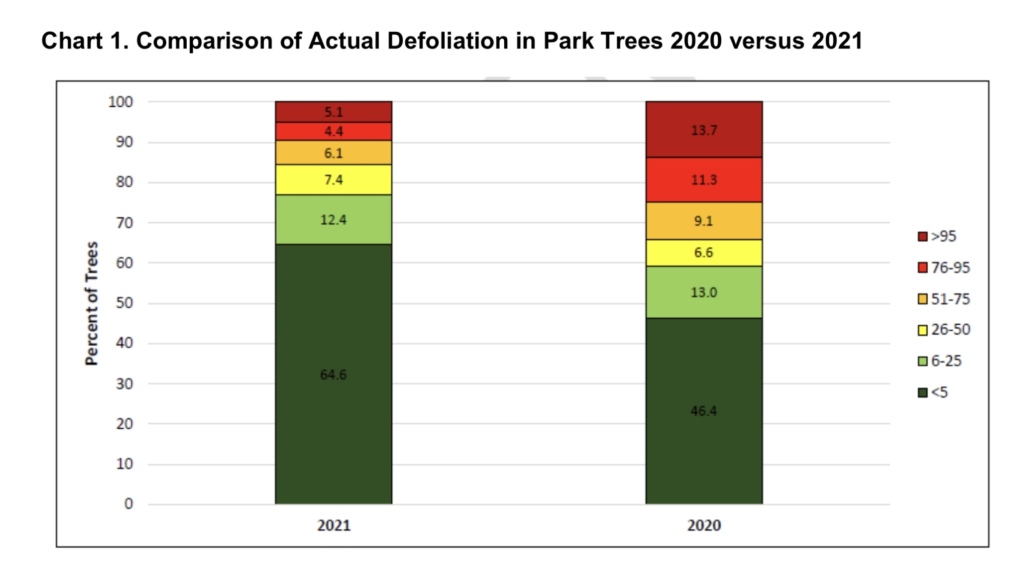City hall is poised to double down on aerial spraying this year to combat the outbreak of caterpillars plaguing several London parks and green spaces.
Renamed LDD caterpillars (Lymantria dispar dispar), the spring time pest can defoliate trees and leave patios and pools beneath trees covered in their fecal droppings.
Natalie Pittam’s home backs onto Forest Hill Woods where last spring, trees became infested with the caterpillars
“We have a pool and we were finding a lot of caterpillars on our pool cover and in our pool,” she recalls.
For the first time in 2021, London aerial sprayed a naturally occurring bacteria called BTK (Bacillus Thuringiensis Kurstaki) on five of the city’s most heavily infested parks.
Byron was once a local hotspot for LDD caterpillars, but a recent survey of egg clusters suggests aerial spraying was highly effective.
“That population is collapsing, so that’s really good news,” explains Jill-Anne Spence, manager of Urban Forestry.
So this year, city staff proposed two aerial applications of BTK on five municipal properties at a cost of $100,000.
- fairmont-park
- Summerset Woods
- Forest Hill Woods
- Springbank Park
- Thames Valley Golf Course
“In Forest Hill Woods we’ve observed that there’s a lot of egg masses, their big, which means the population is healthy and growing,” adds Spence.
Doubling the number of applications won’t eradicate the caterpillars, but city hall hopes to knock down their population to levels that allow predators and other natural controls can take over.
Egg removal from boulevard trees will be expanded to 45 streets this year in areas where caterpillar populations are expected to be highest.
The city will be updating its website this spring with steps homeowners can take to protect trees on private property.